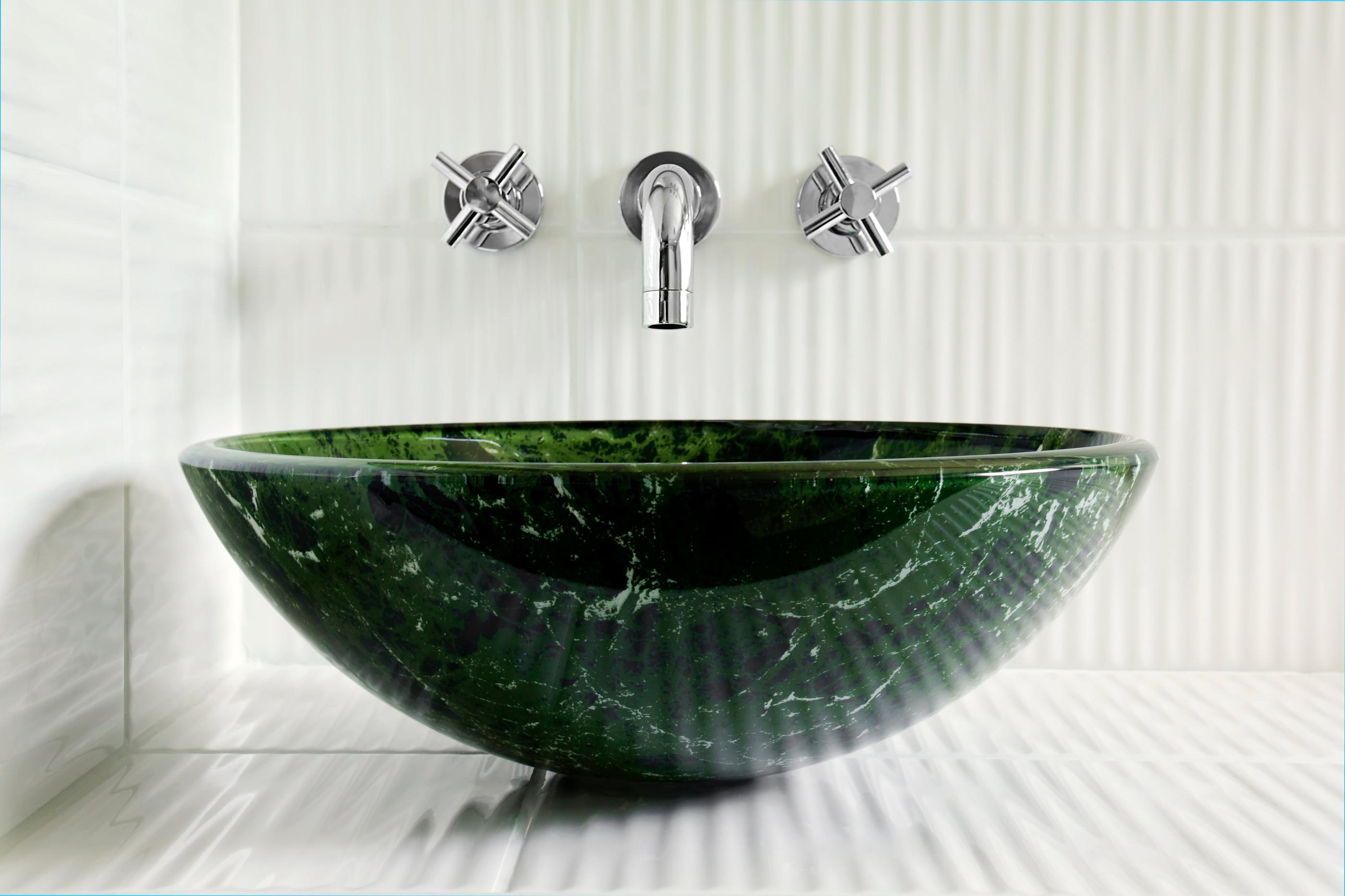In recent years, subway tile has taken the spotlight from its most legendary, yet more inconspicuous, long-term partner–penny tile. Subway stations did frequently include the horizontally-oriented, oblong tiles common in today’s kitchen remodels. Yet if you look more carefully, those same stations would line floors, borders, and other spaces with much tinier tiles.
What is penny tile? We’ll answer that question today, along with uses and examples for applying this charming little tile style to modern kitchen and bath remodels.
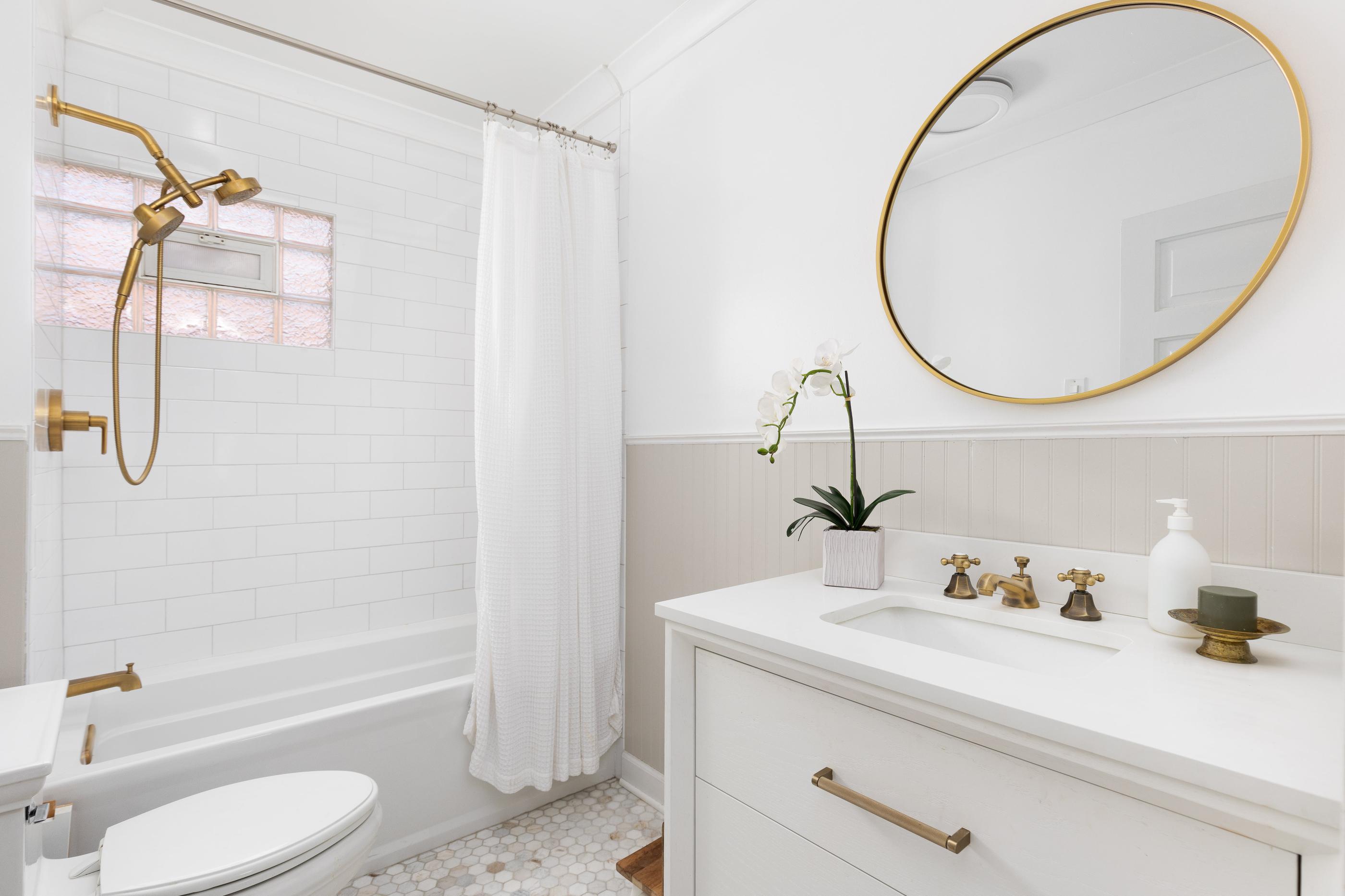
What is penny tile?
Penny tiles are small, round or hexagonal tiles the approximate size of a penny. They came into vogue sometime around the early 1900s, particularly as flooring. The term “penny tile” is often interchangeable with small mosaic tiles that can measure ¾-1” in diameter.
Their small size means they are more difficult to arrange and set in place than larger tiles. If you stroll through a home improvement store today, you’ll see they’re usually sold fixed on sheets of mesh. This helps the process, but installation is still detailed work.
While their decorative appeal is obvious enough, we’ll find later in this article that there is at least one practical reason they became so common.

Borders, backsplashes, and bathrooms: Penny tile ideas for your home
Penny tiles add visual texture and detail while giving us the usual benefits of moisture-resistant, sanitary tile. Due to their history, they’re also a common feature in vintage-inspired designs.

Penny tile borders and accents
Set into recessed shower shelving or adding more interest to the usual subway, penny tiles make great accents and borders. They’re perfect for when you want more decorative detail without coating the walls in a million little tiles.
Consider adding a penny tile border when you want to incorporate more of your color palette into one feature, like the shower. Tiles in an array of like, but not exact, shades help complete your design without plotting a more intricate pattern.
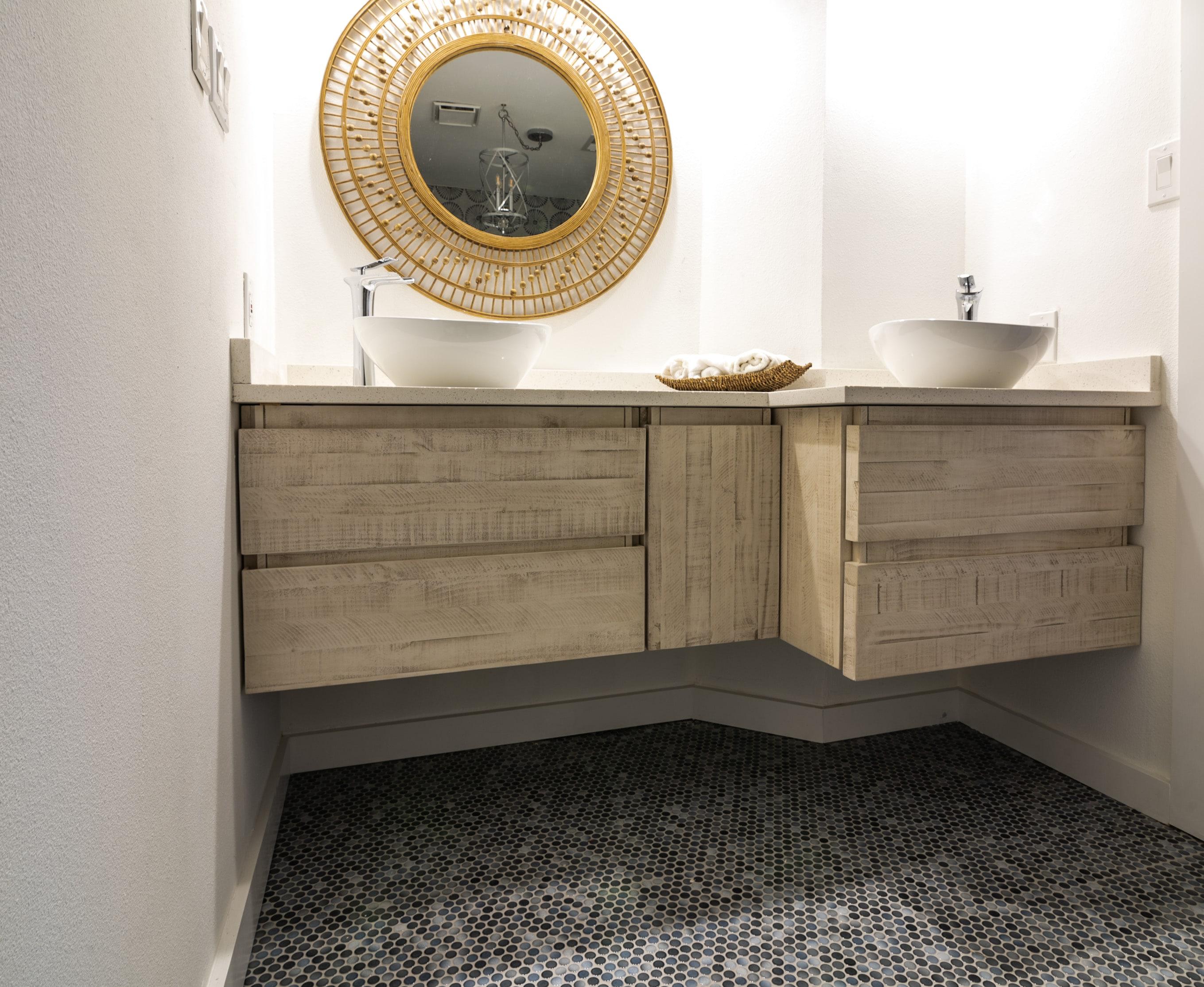
Using penny tile for bathroom floors and showers
The tight arrangement of penny tiles adds texture that’s less slippery than larger tiles. This was a main reason for their use more than a century ago. If you want a slip-resistant shower or bathroom floor that adds high aesthetic appeal, choose classic black, white, and gray penny tiles.
In the example above, a penny tile floor makes a contemporary bathroom remodel with modern floating vanities and vessel sinks look a little more timeless.
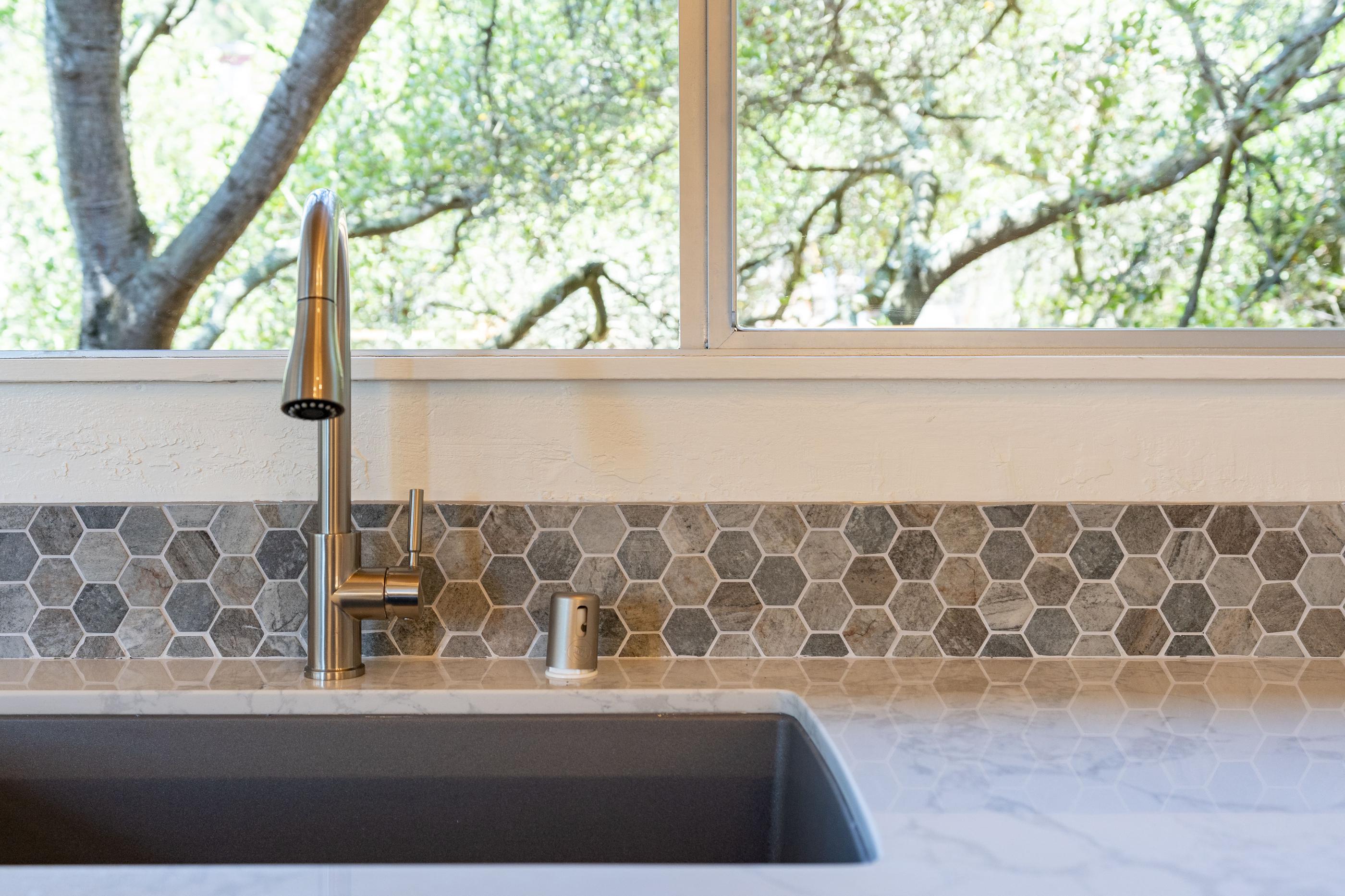
Penny tile as a kitchen backsplash
Tiny tiles are better for tight spaces. Penny tiling gives you the beauty and appeal you want from a backsplash. Yet it can fit narrow dimensions, like those behind a sink and below a window.
Accent panels behind ranges are another popular way to incorporate penny tiles into your backsplash. You can still choose a larger tile (like subway or Zellige) for the majority of the square footage.
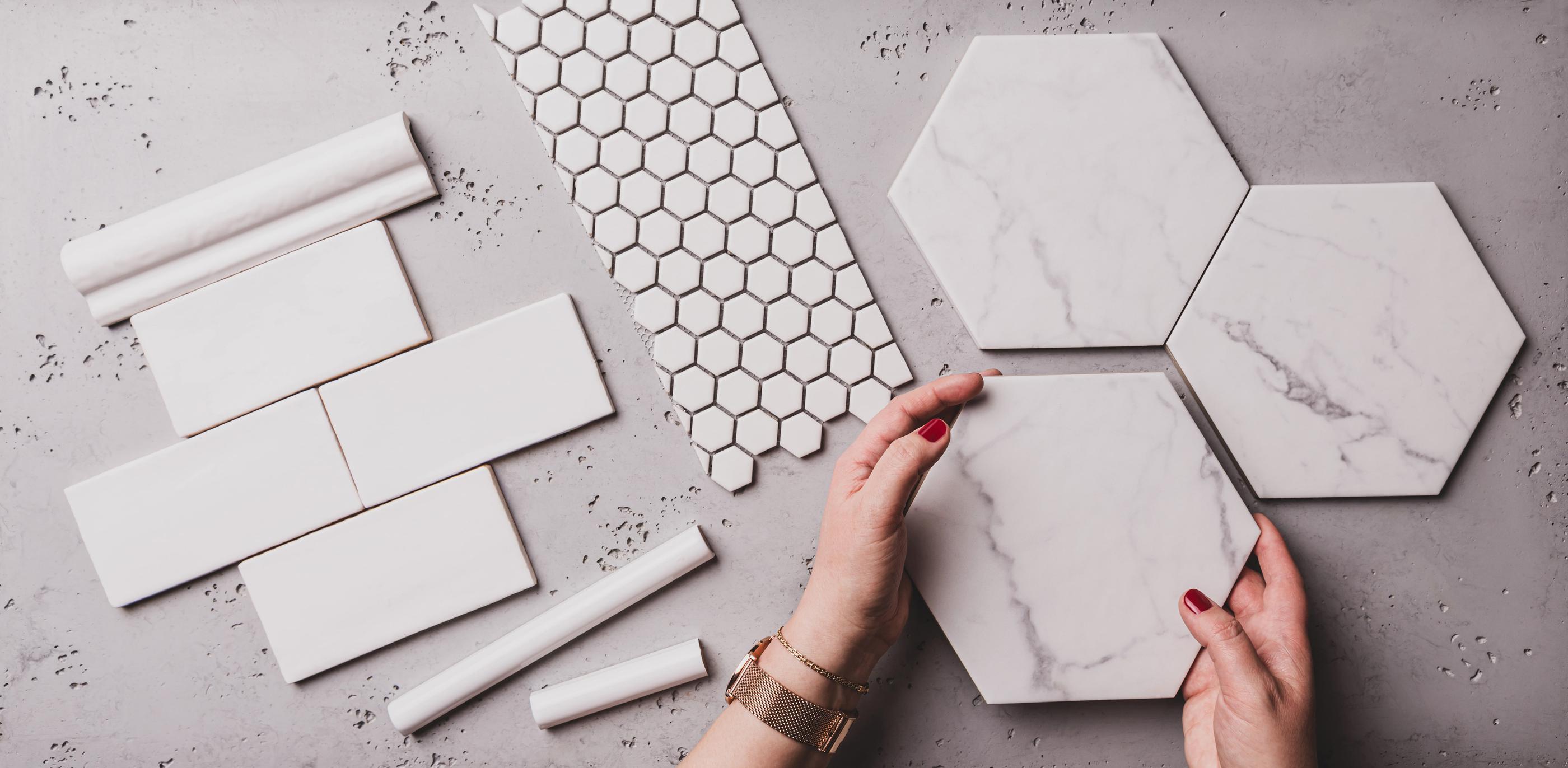
Shop the best tile selection at The Designery
When you’re shopping for kitchen or bathroom tile, look for functional durability and design flexibility. On bathroom floors, including the shower, you want a tile that offers enough traction for safety while still giving the look you dreamed of. In other areas, like recessed shower shelves, you want decorative flair that adds charm and personality to your remodel. Penny tiles can help you meet these goals, but they’re not the only option.
The Designery is your local go-to source for a massive selection of tile, as well as custom cuts and expert installation. See for yourself at one of our showrooms, or discuss your tile options during a complimentary consultation with a design professional.
Penny tile FAQ
Is penny tile easy to install?
Even with the benefit of mesh, penny tile is one of the more advanced tile projects to install. You will require the time and patience of an experienced tile setter to ensure proper alignment, stability, and evenness.
Otherwise, you could find your tiles break or dislodge, or the grout will crumble and flake well before its time.
Is penny tile worth it?
Yes, penny tile adds slip resistance to wet areas, particularly bathroom and shower floors. They’re also unparalleled for intricate designs that add character to a room.
If done well, they can look beautiful for decades. Many historic and older homes with restored features go to great lengths to retain their penny tile.
What are the disadvantages of penny tile?
The main disadvantage of using penny tile would be the grout. Because these tiles typically do not exceed one inch in diameter, there are a lot of grout lines, even when the joins are so narrow. Keeping the grout clean and regrouting or sealing as necessary can be a chore. Many homeowners opt for a darker grout to simplify maintenance.


